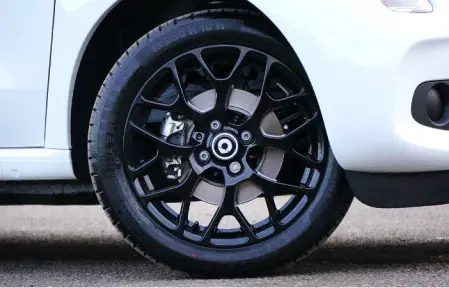
Have you ever gotten a flat tire and wish that you somehow could fix it yourself instead of calling for help?
You will be surprised to know that many people do not even know how to change the tires. And sometimes, those people who do know how to change run-flat tires and even carry a spare tire still wait for roadside assistance - sometimes for hours in rush time.
To make life easier, run-flat tires were invented, and they can mean a difference between waiting for hours on the road and driving your car to the auto shop safely.
Benefits of Run-Flat Tires
On losing air pressure, run-flat tires can run to 50 miles of a distance, giving you the speed of 50 miles per hour.
It is quite the time to reach a safe place where you can find roadside assistance. It depends on the tires you are using, but most tires do give you this average. Their performance also varies depending on the brand, but the distance and speed are almost the same between brands.
On losing air pressure, tires can still perform their task for a short period. You will result in a stable and smooth ride even when using a completely run-flat tire. Depending on the type of such tires, you can get different results.
Self-Supporting Run-Flat Tires
The sidewall reinforcement is the reason that tires can carry the whole running vehicle’s weight even when they lose their air pressure.
Sidewall reinforcement can help lessen the effect of driving on the tires when it is flat. It also can diminish the sound of a flat tire.
Through the tire-pressure monitoring system (TPMS), you can get the reading on the status of flat tires. The only drawback of this is the high burning of diesel and its efficiency. Nonetheless, this step will help you worry less.
Auxiliary-Supported Run-Flat Tires
The tight, thick rubber band on the outline of the wheel is a technology that can support the vehicle's weight even when the tires are flat.
Such technology is used in heavy vehicles such as armored vehicles or vehicles used for heavyweights. All vehicles do not support this technology. Therefore you need first to check-in if your car can support this technology. Make sure you talk with car mechanics about this technology before going for a long trip in your vehicle.
Self-Sealing Run-Flat Tires
Self-sealing tires are a lifesaver since drivers do not even know that their tire was punctured because such tires can seal the protection against any hazards.
Although such technology can save your day, it can cause a complete blowout if not properly kept track of through the tire-pressure monitoring system. This way, you will know when you have your tires changed.
Conclusion
Although these innovations help drivers drive safely and worry-free, you should always keep in mind that you should change your tires or have them checked as soon as possible.
Low air pressure in tires can cause accidents and run-flat tires can be a meaningful solution. However, such tires should be taken as a lifesaver, not as a regular tire for an extended period of time.
Same articles

Understanding Vehicle Inspection and Verification Services: Why They Matter for Every Driver
GuidesVehicle inspection and verification services are an essential but often overlooked part of keeping roads safe and cars legally compliant. Most people only think about inspections when it’s...
KLIFEX Brand Overview: High-Quality Automotive Repair Kits for Affordable Repairs
GuidesThe automotive aftermarket has long needed solutions that combine reliability, durability, and affordability. Many car enthusiasts and services are looking for a way...
Fast, Reliable Vehicle Emissions & Inspection Services Made Simple
GuidesFast, reliable emissions and inspection services are essential for keeping vehicles road-ready, compliant with environmental regulations, and safe for daily driving. If you’re looking for quick...

